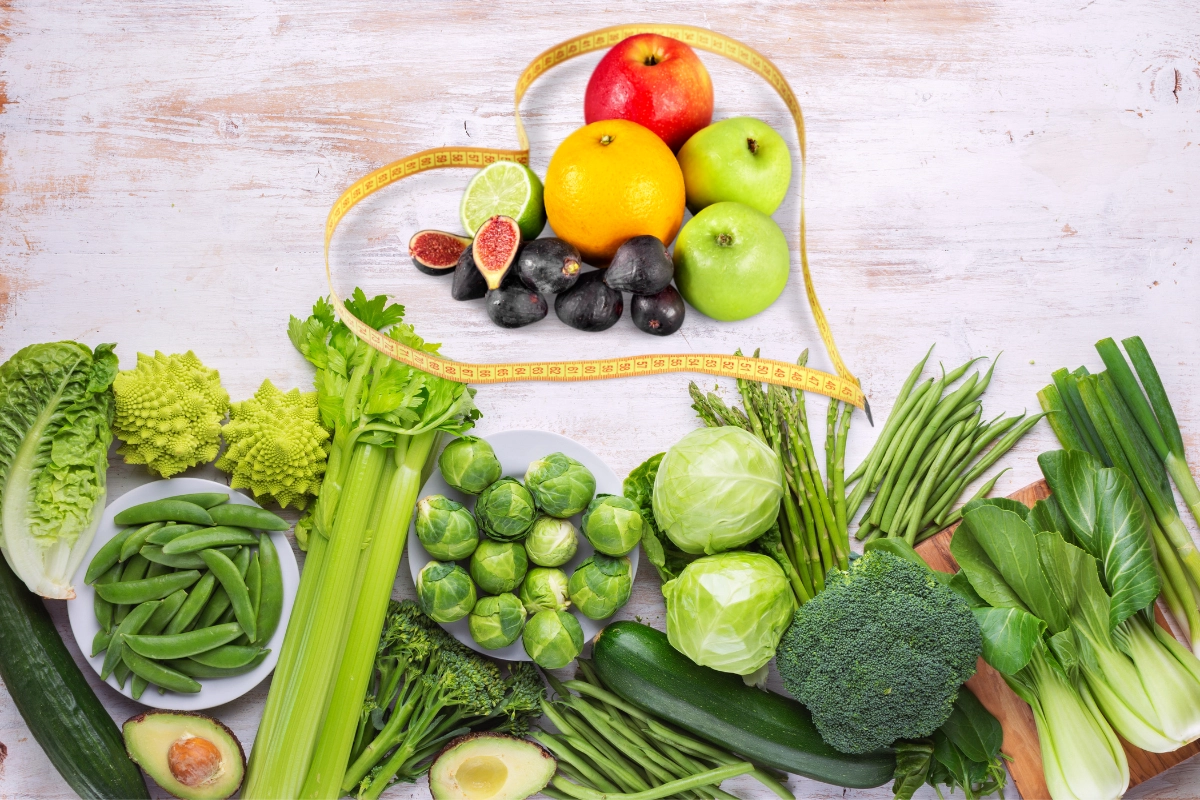Adding these 40 low-sugar fruits and vegetables to your diet is a win-win. Increasing the intake of fresh organic whole fruits and vegetables is recommended for a healthy diet. Natural sugars can add up though. If you are looking to reduce your sugar intake, then include some of these 40 low-sugar fruits and vegetables in your daily diet.
40 Delicious Low-Sugar Fruits and Vegetables for Every Palate
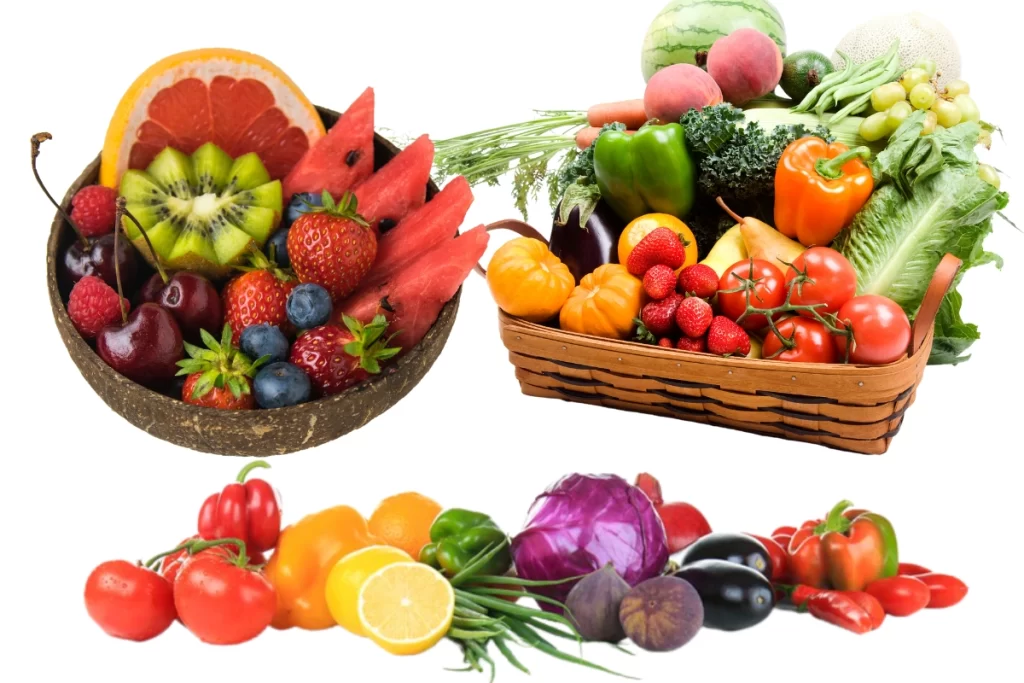
Whether you prefer sweet or savory, here’s a list of 40 low-sugar fruits and vegetables that are sure to satisfy your taste buds without compromising on nutrition. Whether you’re looking to cut down on your sugar intake or just add some more variety to your plate, these 40 low-sugar fruits and vegetables are the perfect addition to any diet. They offer all the nutrition of their sugary counterparts without the added sweetness, making them a great option for those looking for an alternative way to enjoy the freshest produce.
Low Sugar Versus Low Carbohydrates
Carbohydrates are the main source of energy for your body. They come from a variety of sources, including fruits and vegetables, grains, and starchy foods such as potatoes and rice. Carbohydrates are broken down into sugars during digestion, which can then be used as fuel by cells in your body. Carbs, short for carbohydrates, are a macronutrient found in many different types of food. They are composed of carbon, hydrogen, and oxygen and provide energy to the body.
While low sugar and low carbohydrates are often associated with one another, this is not always the case. Remember that low sugar is not necessarily the same as low carbohydrates. While many low-carbohydrate foods will also be low in sugar, they are two distinct dietary components. It is important to consider both the carbohydrate and sugar content when looking for healthy options. A lower carbohydrate intake of 50 grams (or less) per day is recommended for certain medical conditions including obesity.
Overview of Excellent Low-Sugar Fruits and Vegetables
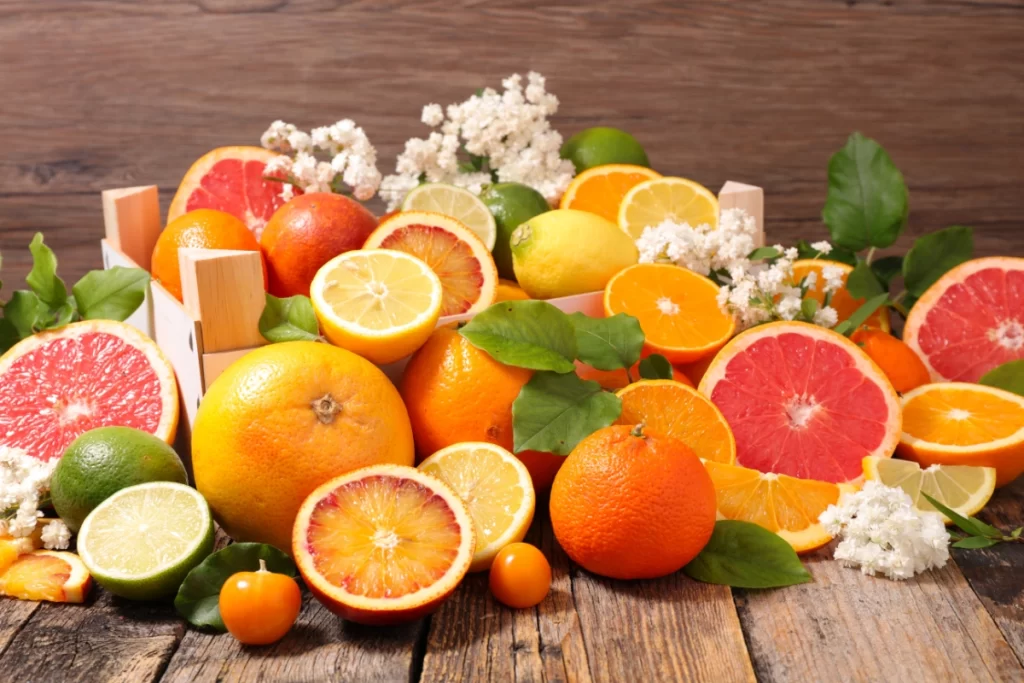
40 low-sugar fruits and vegetables including citrus, melons, berries, and mushrooms, as well others, are excellent low-sugar fruits and vegetables. A low-sugar diet has numerous health benefits, including reducing the risk of obesity and type 2 diabetes, as well as lowering cholesterol and blood pressure. Eating more low-sugar fruits and vegetables also helps to promote long-term energy levels and prevents the unnecessary consumption of added sugar. Eating a balanced diet rich in these nutritious foods can also help improve overall health, support digestion, and promote weight loss.
Citrus fruits such as oranges, grapefruits, and lemons have the added benefit of being particularly high in vitamin C content which helps protect our bodies from harmful free radical damage that can cause degenerative diseases like cancer or heart disease long term. But besides its huge health benefits – citrus fruit has very low levels of natural sugars at 8–11g depending on the slice or peel size!
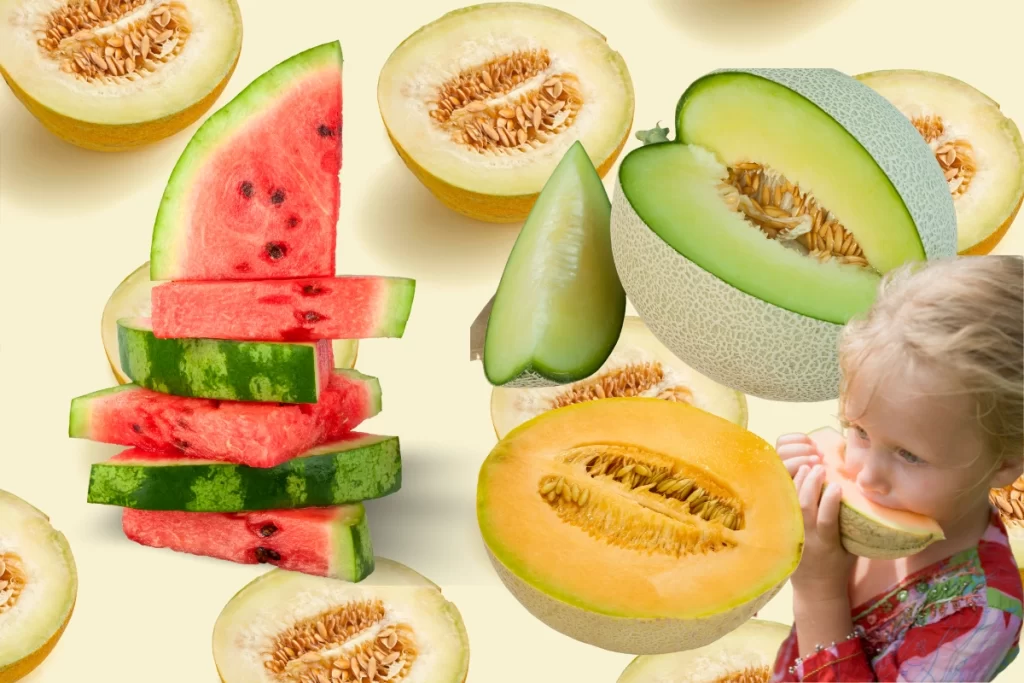
Melons are great options for those looking for low-sugar fruits – especially watermelons. Watermelon only has 6g of sugar per cup, and it contains an abundance of other minerals such as magnesium, potassium, iron, and calcium as well as plant-based antioxidants to boost overall health. Other melons such as honeydew and cantaloupe likewise are both sweet and contain minimal amounts of natural sugars.
With relatively one of the highest water contents among fruits (as much as 90%), melons such as honeydew and cantaloupe are delicious additions to your diet plan due to their negligible calorie levels per serving size–making them perfect for a midday snack or dessert option after dinner. Not only that – they’re also filled with various essential minerals like zinc and magnesium which help keep cravings under control while offering plenty of health benefits at the same time!
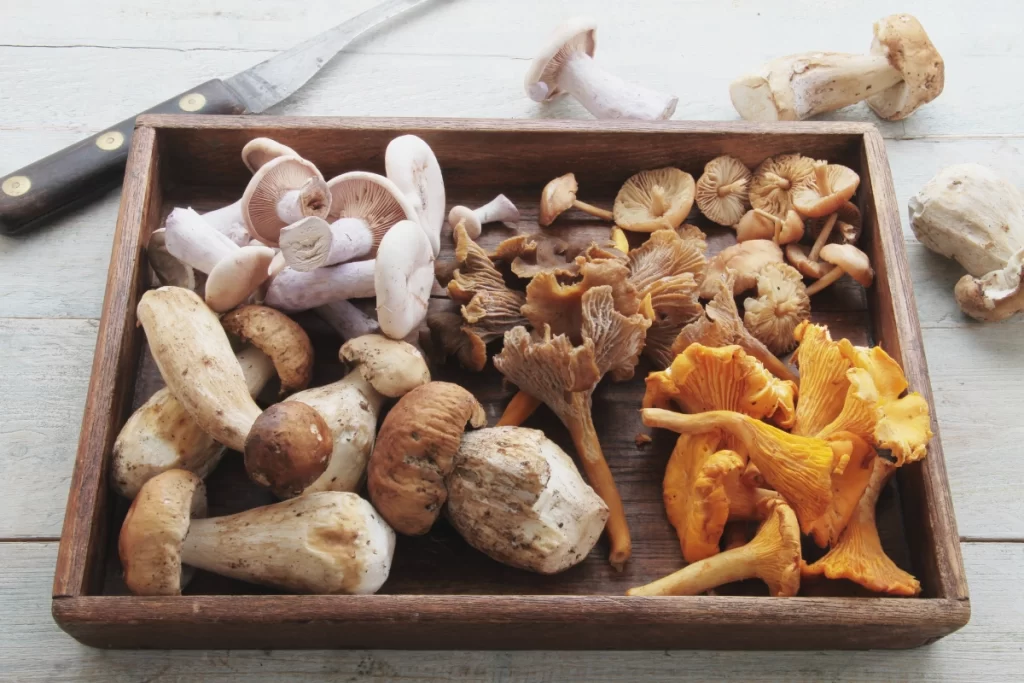
Another super star in our lineup of 40 low-sugar fruits and vegetables is assorted varieties of edible mushrooms. Mushrooms are considered very low in sugar because most varieties contain zero grams per cup (including button mushrooms!). In addition to that they make a great meat alternative containing proteins, phosphorus, potassium, and selenium – therefore helping promote muscle repair & growth. Furthermore, they have natural anti-inflammatory effects too due to their ergothioneine molecules which can help you manage and heal faster from illnesses or injuries!
Berries are a great choice if you’re looking for low-sugar fruits! Strawberries come in at 7g of sugar per cup, blueberries have 15g, and raspberries have 5.4g of sugar per cup. Not only are berries sweet and delicious, but they’re also packed with antioxidants and vitamins that help fight free radicals which prevent disease.
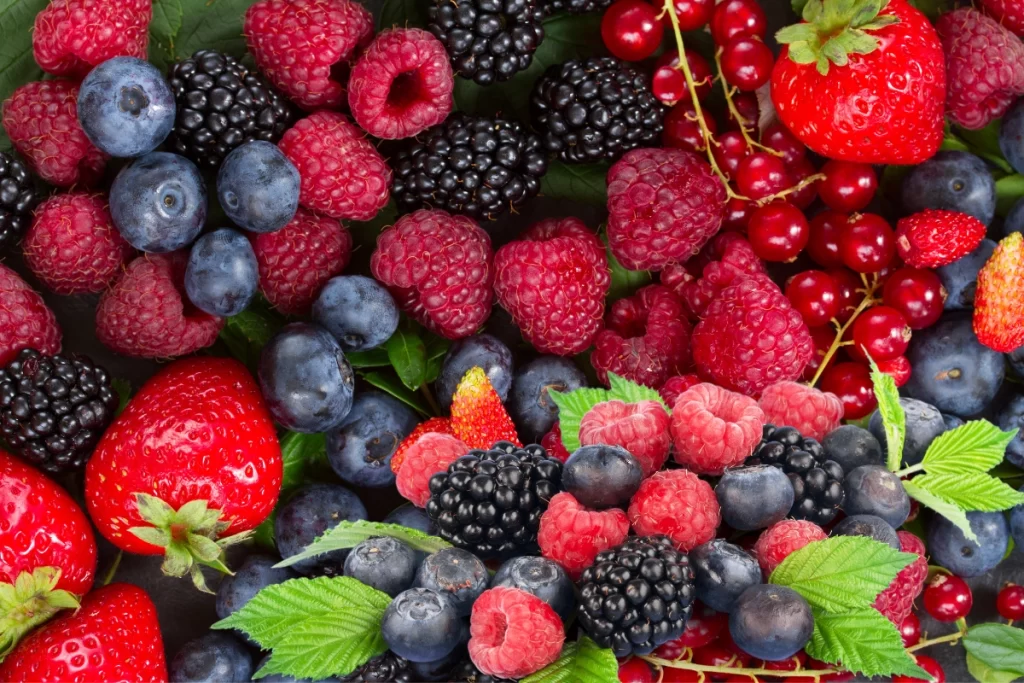
Berries are low in calories and rich in antioxidants–which makes them an ideal treat for those watching their waistlines! Strawberries and raspberries maybe two of the most common types, but just about any kind (blueberries, cranberries, etc.) can fit into the category of negative-calorie-producing fruits due to their low-calorie count.
Lettuce is a versatile vegetable that comes in many different varieties, making it easy to add a little nutrition and crunch to any meal. While some lettuces have high sugar content, there are several types of lettuce that have surprisingly low sugar levels, including romaine lettuce, green leaf lettuce, iceberg lettuce, and butterhead (Bibb) lettuce. These varieties are also an excellent source of essential vitamins and minerals like B Vitamins and folate while having only 15 calories per 5-cup serving. Lettuce is a powerhouse star in the 40 low-sugar fruits and vegetables foods for providing more energy.
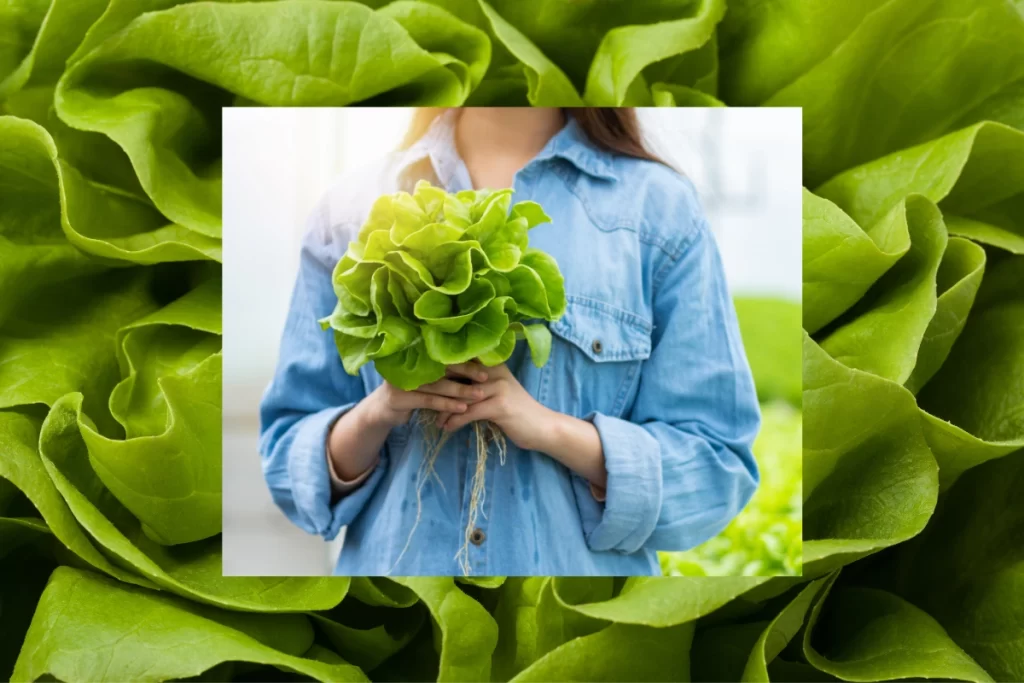
Our Top Picks
List of 40 Low-Sugar Fruits and Vegetables
- Apples – One of the most iconic and widely available fruits, apples have a low sugar content and contain a good amount of dietary fiber. Apples are a great low-sugar treat perfect for people who want to satisfy their sweet cravings without spiking blood sugar levels. An average medium size apple has just 4 grams of sugar, making them one of the lowest-sugar fruits out there. Apples are also a good source of dietary fiber, Vitamin C, and other beneficial minerals. For an even lower-sugar treat, try preparing them with cinnamon or nutmeg for natural sweetness without added sugars.
- Peaches – Peaches are an excellent option for those looking for a relatively low-sugar snack. With only 12g of naturally occurring sugars per 1 cup serving, peaches contain significantly less sugar than other popular snacks like donuts or cookies. Not to mention, peaches provide various vitamins and minerals such as Vitamins A and E, and are fat-free. In addition, their dietary fiber content is higher than that of oranges. Swap out the ice cream or candy for some fresh peach slices and get your sweet fix without exceeding your sugar intake.
- Avocados – Avocados although technically classified as a fruit occur predominantly within savory recipes more often than anything else. However, they do make appearances in sweets occasionally including vegan ice creams. The low sugar content of avocados, at only 0.4g per ounce, makes them one of the healthiest fruits out there. With just 2-3 grams of sugar per serving, avocados can be used as a substitute for snacks that normally contain added sugar or to replace eggs or dairy when baking sugar-free treats like vegan ice. A popular dish using avocados is guacamole. Additionally, avocados are an excellent source of fats as well as vitamins B and E.They are great in salads or as a stand-alone side to meat dishes.
- Pomegranates – Pomegranates are a low-sugar superfood with only 6 grams of sugar per cup. This makes them the ideal food to add sweetness and flavor to any dish or dessert while keeping sugar levels low. Enjoy this delicious fruit as part of your healthy diet plan today.
- Grapefruit– Grapefruits are a fantastic source of vitamins and minerals, containing vitamin C, fiber, and potassium. What’s more, they are also some of the lowest-natural sugar fruits you can find. Eating grapefruit requires more energy than what the fruit itself can provide, so from a calorie perspective, it is technically a negative-calorie food. As such, it is an excellent choice when it comes to controlling sugar cravings.
- Lemon – Lemons taste amazing! Lemons provide a powerhouse of vitamins C & B6, helping to strengthen your immune system and boost your metabolism. Plus, lemons have one of the lowest sugar/fructose counts among other fruits. Not only will you benefit from its plethora of nutritional benefits but consuming it also helps you burn excess calories!
- Oranges – If you’re looking for a way to enjoy oranges without loading up on too much sugar, then freshly squeezed orange juice is your best bet. It provides lots of Vitamin C and features fewer natural sugars than canned variants, so you don’t have to worry about consuming too much sugar quickly. And you can snack guilt-free since orange peels contain pectin, a type of dietary fiber.
- Broccoli – Broccoli contains only 4 grams of sugar per cup and a variety of other health benefits. It is rich in fiber, vitamin A, vitamin C, vitamin K, zinc, potassium, and Omega-3 fatty acids. Broccoli also contains sulforaphane which helps reduce the risk of certain types of cancer if consumed on a regular basis. Broccoli is an excellent superfood low in sugar and high in nutritional value. It’s packed with dietary fiber, calcium, and magnesium and provides a mouth-watering crunchy texture on top of all the health benefits. Enjoy boiled or steamed broccoli as a side dish to your meal or snack on it raw, with some homemade hummus for a tasty mid-day treat.
- Spinach – Spinach is an incredibly nourishing food. Not only does it only have 1 gram of sugar per cup, but it also provides magnesium and calcium which promote bone density while reducing the risk of developing osteoporosis. Additionally, its presence of lutein and zeaxanthin makes it beneficial for healthy eyesight. Above all, it is particularly known for its high iron content; this helps the body reduce inflammation and fight off fatigue.
- Asparagus – Asparagus has a low sugar content, with fewer than 4 grams per cup. It is full of essential vitamins and minerals such as A, C, E, and K and it is high in fiber. Eating asparagus can help to bolster your immune system and fight off common diseases like colds or flu. In addition to its immunity-boosting benefits, asparagus can help regulate blood sugar levels to improve circulation and promote healthier cells throughout the body – giving you more energy.
- Cabbage – Cabbage is another popular and highly nutritious superfood that is low in sugar. Like broccoli, it’s rich in dietary fiber and vitamins A, C, and K as well as folate and manganese. Use cabbage to add some crunch to salads or coleslaw, or you can cook it slowly with onions and garlic for a unique flavor combination. Enjoy savory cabbage dishes like stuffed cabbage rolls with your dinner or crunchy red cabbage slaw as an afternoon snack.
- Green Beans – Green beans are surprisingly low in sugar, with only about 2 grams found in every ½ cupful serving. They contain vital antioxidants such as carotenoids and flavonoids that help protect us from environmental toxins, smog, pollution, and virus or bacteria-related threats. The high levels of methoxy cinnamic acid and chlorogenic acid found in green beans act as a buffer against negative elements, which can trigger allergy flare-ups during seasonal changes. This makes them great for strengthening the immune system, so you’ll feel better quickly.
- Kale – Kale is one of the most nutritionally rich superfoods, and luckily it tastes great too! This leafy green vegetable is not only very low in sugar but packed with proteins, calcium, iron, magnesium, and phosphorus. It’s also an excellent source of Vitamin A and C. Kale is a great addition to stir-fries, soups, or omelets, or even eaten on its own as chips! With such a variety of uses, kale can easily be incorporated into anyone’s diet for added nutrition without added sugar. For those who don’t consume dairy products, the calcium content in kale is especially beneficial. To make a tasty snack alternative to processed chips, try tossing kale leaves in olive oil and baking them until crispy – delicious.
- Celery – Celery is an excellent choice for those looking for a snack that is low in sugar and calories. One stalk contains just 6 calories and is packed with essential vitamins such as vitamin K, folate, phosphorus, and magnesium. Best of all, its negative calorie content means that you’ll be getting a good dose of nutrition without having to worry about spiking your blood sugar levels.
- Cucumbers – Cucumbers are a great health food as they are low in sugar and have 16 calories per cup. They are packed with water, fiber, and antioxidants, making them an ideal choice for those looking to lose weight. Their high content of fiber can help provide a feeling of fullness without the added sugar and calories.
- Bell Peppers – Bell peppers are a low-sugar and low-calorie food, making them an ideal choice for those looking to maintain or improve their health. A single cup contains only 30 calories, and has zero sugar, making it an excellent addition to any vegetable dish. Bell peppers also come in a variety of colors – red, yellow, and green – so you can add plenty of brightness to your meals while still consuming fewer calories than other vegetables.
- Romaine Lettuce – Romaine lettuce is a low-sugar vegetable, contributing only trace amounts of sugar. Despite this, it still provides an array of nutritional benefits, such as B vitamins and folate. Additionally, you can enjoy a large portion for just 15 calories—that’s 5 cups! These things make romaine lettuce an ideal option for those looking for nutrient-packed options with little to no added sugars.
- Tomatoes – Tomatoes are a great choice for low-sugar salads and have just 22 calories in each medium-sized slice. They provide a pop of color and flavor that brings out the best in summer salads! Enjoy these nutrient-rich fruits this season and make sure to get plenty of tomatoes in your recipes.
- Spinach – Rich in iron content but incredibly low in fat, spinach proves itself a worthy successor when we talk about healthy greens that won’t break the caloric bank. Boasting 7 grams per cooked cup; spinach is enjoyed by fitness fanatics worldwide due to its minuscule 23-calorie count!
- Jackfruit – Jackfruit is a tropical fruit with a mild tangy taste like pineapple or mango. It’s low on sugar, only containing about 10 grams per 100g of fruit. The texture is creamy and unique when ripe, making it a great addition to many dishes both sweet and savory. Its high fiber content also makes it an excellent choice for those looking to reduce their daily sugar intake while still getting the full range of vitamins and minerals found in fruits.
- Raspberries – Raspberries are sweet and juicy with just 4 grams of sugar per 100-gram serving, making them much lower in sugar than most other fruits. Aside from their amazing flavor, raspberries contain numerous antioxidants that can help fight inflammation and protect your cells from damage caused by free radicals. They are also high in fiber which can help improve digestion and keep you feeling full for longer. Read on for more of our 40 low-sugar fruits and vegetables.
- Papaya – Papaya is a delicious tropical fruit that contains even less sugar than raspberries, 3 grams per 100g serving! Papayas are also packed with nutrients necessary for good health such as Vitamin C, A, B6, magnesium, and potassium as well as several carotenoids like beta-carotene and lutein all of which can aid in promoting eye health, improving skin quality and reducing inflammation throughout the body.
- Lemons – Lemons may be known for their fresh citrus aroma but they’re actually quite low in sugar. In fact, they contain only 0.9 grams per 100g serving so if you’re limiting your consumption lemons are a go-to option. Not only do lemons provide vitamin C but they offer other essential vitamins such as thiamine (B1), riboflavin (B2) niacin (B3) pantothenic acid (B5) folate (B9), choline, and vitamin K.
- Cantaloupe – Cantaloupe is an excellent source of antioxidants and beneficial phytonutrients including carotenoids such as beta-carotene and lutein which can help nourish our eyesight with age-related conditions like cataracts and macular degeneration not to mention its incredibly low amount of 9grams per 100g serving! Plus, each bite offers us plenty of flavor along with important minerals like magnesium, potassium, phosphorus, sodium, iron, calcium, and zinc that are needed for healthy living!
- Cranberries – Cranberries make up part of the group referred to as superfoods due to their high concentration of polyphenols which possess antioxidative properties aiding us against diseases like cancer heart disease and diabetes. Cranberries are one of the few fruits that are incredibly low in sugar, with only 4 grams per 100-gram serving. This makes them a great choice for those looking to manage their blood glucose levels without experiencing the high sugar consequences associated with desserts and other sweet snacks. Cranberries are not only surprisingly low in sugar but they are also naturally rich in vitamins A and K as well as fiber, making them an excellent source of nutrients. Additionally, fresh cranberry juice has been shown to have anti-inflammatory properties that can promote healthy skin while providing a tasty treat.
- Strawberries – Strawberries are one of the most popular berries for snacking, baking, and smoothies. Not only do they taste delicious, but they are also very low in sugar compared to other fruits! One cup of fresh sliced strawberries has about 5.4 grams of sugar, making it a great option for those trying to watch their intake throughout the day.
- Blueberries – Blueberries are known for their antioxidant properties and health benefits, but luckily they won’t cause a massive spike in your blood sugar levels! One cup of blueberries contains 8 grams of naturally occurring sugars which is not too shabby if you’re counting! As far as low-sugar options go, these superfoods could be a great addition to many recipes or snack ideas throughout the week!
- Gooseberries – These little gems offer a tart flavor that many people love! They tend to be on the smaller side (usually 1-2 inches long) and range from light green to pinkish-red when ripe. One cup of these babies contains just 5 grams of natural sugar, making them an excellent choice for those seeking out sweet flavors without all the added sugars found in other treats. Plus, gooseberries contain 3x more antioxidants than blueberries!
- Blackcurrants – Blackcurrants are high in vitamin C, iron, and calcium while being relatively low in natural sugar – one cup provides 6 grams with no added ingredients typically needed during preparation like jams or syrups would require. With its intense flavor profile, blackcurrants can make great additions to salads or other savory dishes if you’re looking for something with personality packed into it!
- Goji Berries – Goji berries are a great choice for anyone looking to snack on something tasty and healthy with low sugar content. Just a small 30g bag of goji berries contains only 6g of naturally occurring sugars, making it an ideal snack for those trying to modify their diet or looking for a quick energy boost after a long day. The additional benefits of vitamins and minerals most certainly place this ‘superfood’ above the rest!
- Shiitake Mushrooms – Shiitake mushrooms have an earthy flavor, dense texture, and chewy exterior. They come in a variety of colors, ranging from tan to dark brown, and are readily available in grocery stores. These mushrooms can be prepared in a variety of ways – they are tasty stir-fried, sautéed, grilled, or roasted. The flavorful shiitake mushroom pairs perfectly with dishes like stews, risotto, or even pasta.
- Portobello Mushrooms – Portobellos are rich in umami flavor and large enough to be used as a replacement for many proteins such as steak. Easy to prepare, these mushrooms make great entrees when served on their own or with extra ingredients such as garlic and onion for extra flavor. To cook them properly keep them on low heat so that the outside cook before the inside dries out too much.
- Oyster Mushrooms – Oyster mushrooms feature an oyster shell appearance due to their gills along the underside of their cap; it also has a frilly look that is attractive on any plate presentation they find themselves a part of! These tasty fungi can be prepared simply through pan frying or sautéing them with butter onions and garlic for added depth of flavor! They also pair easily with more complex sauces such as Herbs de Provence for something entirely distinct!
- Enoki Mushrooms – Enoki mushrooms have long stems topped with small delicate caps that resemble tiny flowers making these fungi surprisingly beautiful to look at in addition to being edible! Enoki mushrooms, a type of fungus with long, thin stems, originated in Japan and are now found around the world. They have a distinct visual quality that has made them popular as a culinary ingredient in both Japanese and Western dishes. From salads to soups to Ramen noodles, Enoki mushrooms can be seen all over the globe adding color and flavor to many recipes.
- Cremini Mushrooms – Cremini mushrooms may not be as well-known as other edible fungi but these tasty morsels pack just as much punch if not more than others making them uniquely delicious when used in several different types of preparation methods including a very popular one that involves grilling directly over open flames resulting in caramelization around the edges bringing out more complex yet earthy flavor profile this type offers up!
- Porcini Mushrooms – Porcini mushrooms bring an intense woodsy aroma appreciation and warm nutty nuttiness to any dish they grace their presence upon ranging from pasta dishes and salads where porcini contribute deep richness barely found elsewhere all while keeping dish comparatively light thanks to naturally generous water content these marvels of edible fungus possess! And even better yet they pair exceptionally well with simple preparations like shallots or melted butter resulting in a pleasing snack or side dish depending on what’s needed at the time!
- Chanterelle Mushrooms – Chanterelles earn themselves rightful placement amongst the most edible, healthiest, and most beloved mushrooms due to their undeniably sweet yet distantly pungent ‘essence’ that makes them oh-so enjoyable to eat. Adding chanterelle mushrooms to your meals is a healthy way to add flavor, texture, and nutrition. These mushrooms can be prepared in various ways such as roasting, searing, frying, or sautéing and still offering their beneficial goodness. Chanterelles are often added to lighter vegetarian dishes as they keep everything bright yet deeply flavorful at the same time. This classic favorite has earned itself spot-on regular meal options, due to the high satisfaction standard it continuously meets. Enjoy a guaranteed good meal when you have chanterelles at your next meal.
- White button mushrooms, also known as Agaricus bisporus, are a type of edible mushroom commonly found in grocery stores. They’re low in sugar and calories and provide many essential vitamins and minerals such as phosphorus, potassium, and vitamin D. They can be cooked or eaten raw in salads and are a popular ingredient in many dishes.
- Honeydew melons – Are you looking for a low-sugar and healthy fruit? Then, the honeydew melon is a perfect choice. Honeydew melons have distinctive smooth rinds and pale green flesh. One cup of honeydew contains more than half of your daily Vitamin C intake, without adding any unnecessary calories or fat to your diet. This type of melon is also high in minerals such as calcium, magnesium, phosphorus, and potassium, but without packing a punch of added sugar. Honeydew melon typically contains 13 grams of sugar per cup
- Watermelons – Enjoying low-sugar fruits is an easy way to keep your sugar intake in check. Watermelon and other summer fruits provide naturally occurring sugars, which can be beneficial. Choose a rainbow of different fruits throughout the year for their nutrient content and water, as well as a lower amount of naturally occurring sugars compared to processed or added sugars.
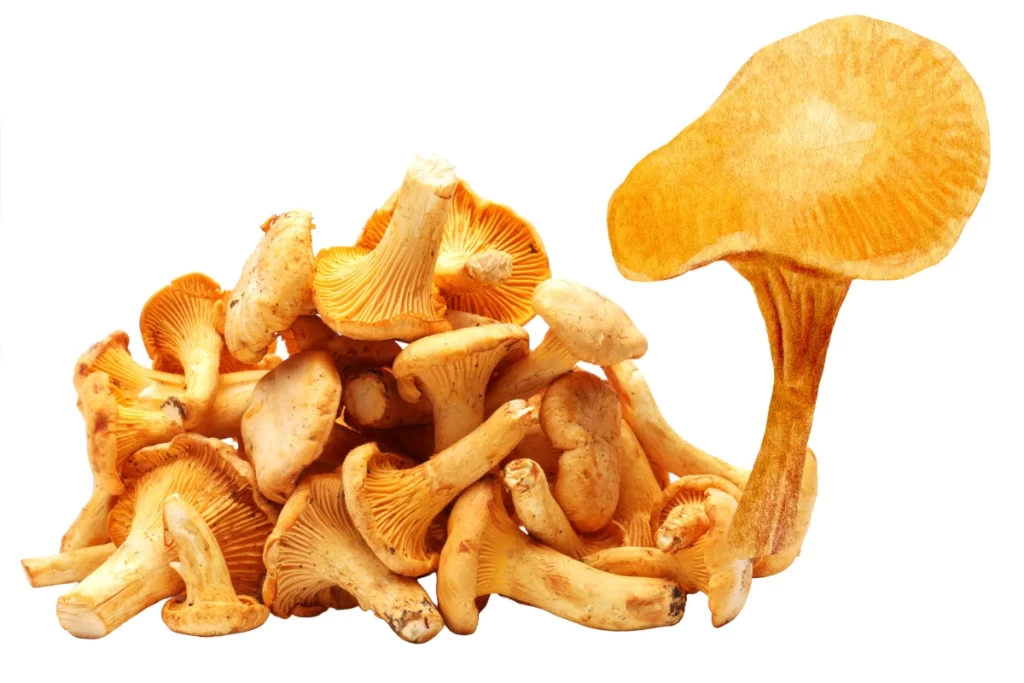
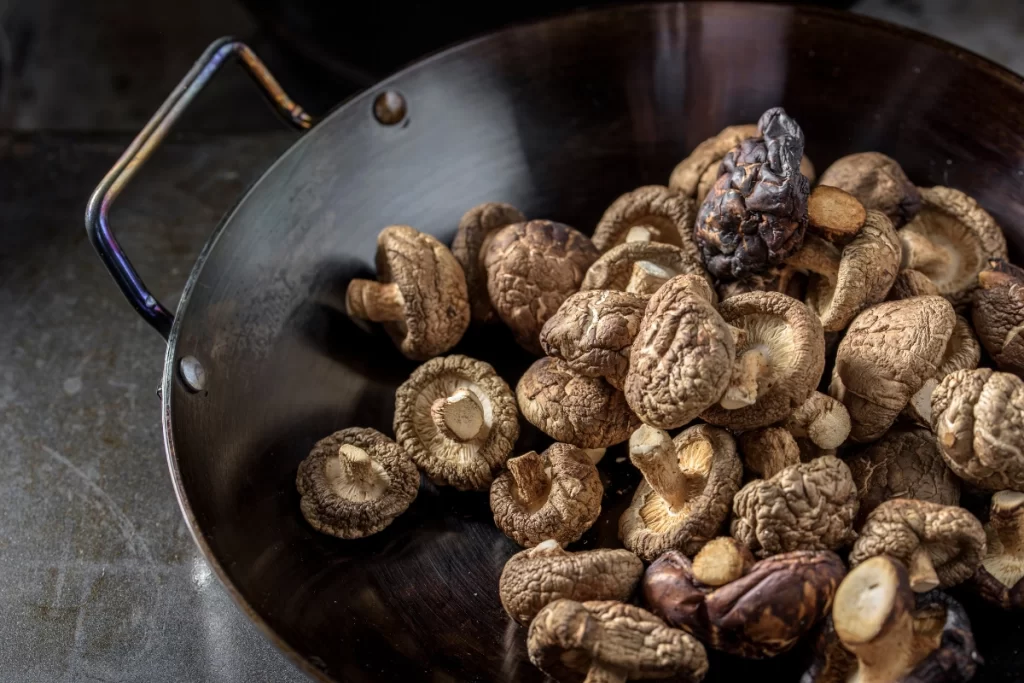
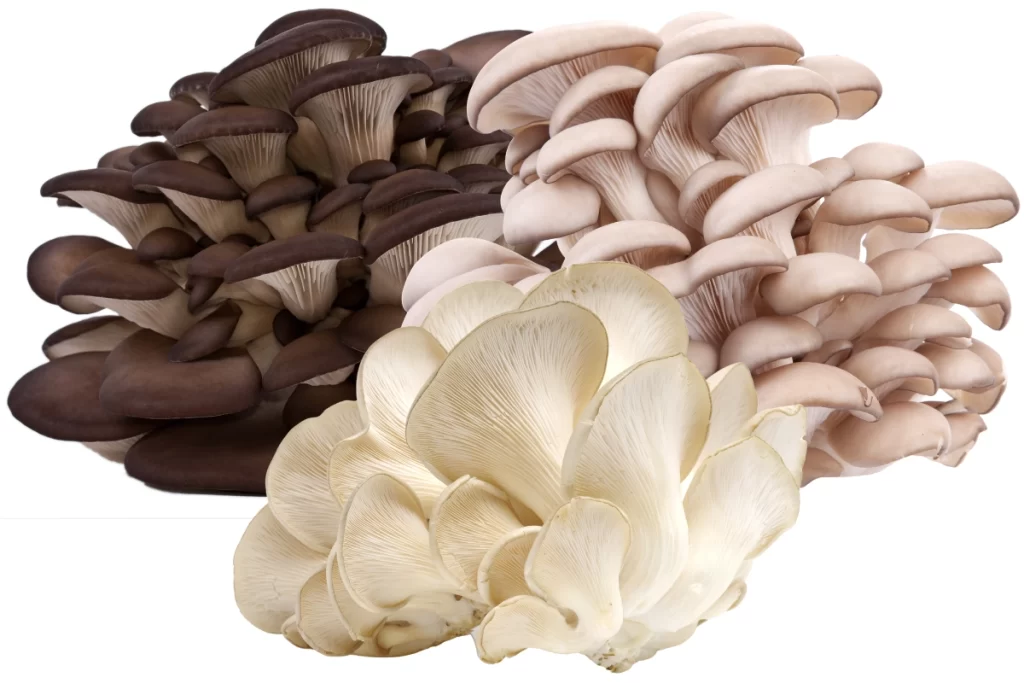
In conclusion, including these 40 low-sugar fruits and vegetables in your diet can keep you on track for a healthy lifestyle. Eating a low-sugar diet can have numerous health benefits, including weight loss, reduced risk of developing diabetes and other chronic diseases, improved energy levels, and better mental clarity.
Eating fewer processed foods is also beneficial for reducing the amount of added sugars in your diet. Eating more whole, unprocessed foods such as fruits, vegetables, legumes and healthy sources of protein will help you meet your nutrient needs without relying on high-sugar foods or drinks.
Check out our healthy lifestyle tips here.
Read about sugar intake CDC recommendations for young children here.
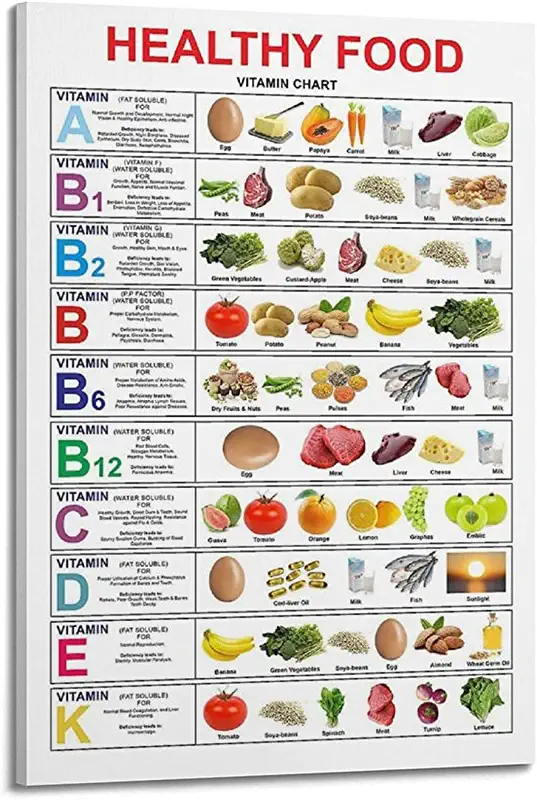
Advertisement
As an Amazon Associate, Omega 3 Tips earns from qualifying purchases.
Healthy Food Wood Wall Hanging
ADD ADHD Alzheimers antioxidants arthritis Best Sources of Omega 3 6 9 Fatty Acids cancer exercise fatty acids fatty fish fermented foods fish oil flax seed oil health benefits healthy diet Healthy Lifestyle healthy lifestyle benefits healthy lifestyle food Healthy Weight loss heart disease herring hummus indoor herb garden grow light indoor herb garden kits indoor herb garden on wall indoor herb garden planters jackfruit joint stiffness mackerel meditation mental health mushrooms oily fish omega-3 omega-3 fatty acids omega 3 6 9 risks and side effects Omega3tips.com salmon sardines super foods tuna unplug vitamins Weight loss wellness
Iron-rich fruits and vegetables include apricots, spinach, kale, dates, figs, turnip greens, potatoes, and tomato juice. You can also get iron from seeds such as pumpkin seeds or sesame seeds as well as nuts such as cashews or almonds.
Yes, there are a variety of fruits and vegetables that have high protein content, such as spinach, black beans, artichokes, guava, apricots, and kiwi. Additionally, certain nuts and seeds such as almonds, pistachios, and sunflower seeds are excellent sources of protein.
The USDA recommends that adults eat 1.5 to 2.0 cups of fruit and 2 to 3 cups of vegetables per day, depending on individual calorie needs. Fruits and vegetables are an important part of a healthy eating plan, and variety is as important as quantity when it comes to getting the health benefits they provide.

